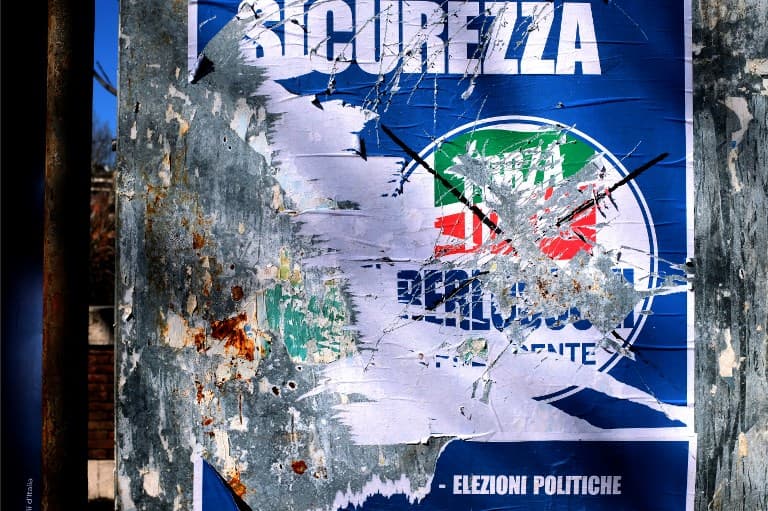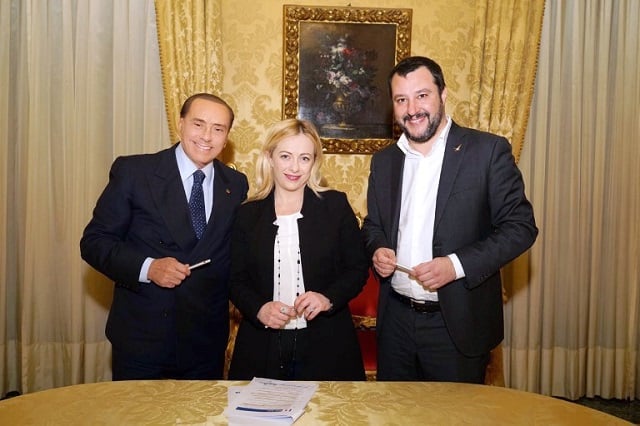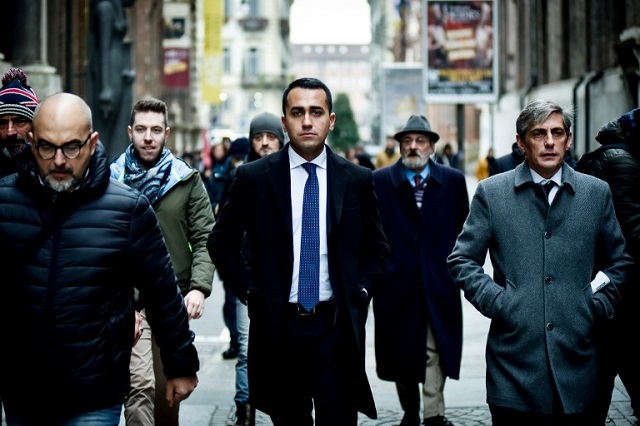What's next for Italy? The post-election scenarios

Italy's general election left the country with a hung parliament in which no single party or coalition commands an overall majority, leaving few options to form a government.
The prospect of a grand coalition between Silvio Berlusconi's Forza Italia (Go Italy) party and the ruling centre-left Democratic Party (PD), envisaged before the vote, is no longer feasible after the two underperformed on election night.
The results leave the populist Five Star Movement (M5S) and the far-right League party in the driving seat as the country looks to cobble together a government with a working majority.
Here are three possible scenarios.
Right-wing coalition
The coalition formed of far-right groups and Silvio Berlusconi's centre-right Forza Italia party took 37 percent of the vote, the leading bloc in the poll.
In a stinging defeat for Berlusconi, the anti-immigrant League party headed by Matteo Salvini emerged as the strongest movement within the coalition, taking almost 18 percent of the vote compared to Berlusconi's 14 percent.
The bloc is short of an absolute majority but, speaking after the vote, Salvini said it had the "right and the duty" to govern the country.
The eurosceptic also staked his claim for leadership saying that the leading party in the coalition should nominate the future premier.
READ MORE:
-
Is Italy's League a far-right party?
-
Who is Matteo Salvini? The rebranded nationalist leading Italy's League
-
Inside a campaign event with Berlusconi's supporters

Berlusconi with coalition allies Giorgia Meloni and Salvini. Photo: Livio Anticoli/AFP
Five Star alliance
The maverick Five Star Movement was the other election success story, sweeping Italy's south to become the single leading party with 33 percent of votes.
Despite previously ruling out forming alliances, its leader Luigi di Maio said he "felt the responsibility to form a government for Italy" and would be open to discussions.
Having previously ruled out forming alliances, Di Maio said the party was ready to open discussions "with all political actors" to help form a majority in parliament.
The far-right League has ruled out any partnership, with leader Salvini stating: "N.O. No, underlined three times."
That leaves the shock prospect of M5S teaming up with the Democratic Party , whose centre-left coalition picked up just under 23 percent of the vote.
Defeated PD leader Matteo Renzi has said he will not step down until a new government is formed, and insisted that the party would "not be a crutch for anti-system forces".
That has angered those within the PD who are open to working with M5S.
"In order to cling on, [Renzi] is willing to stall the political system," said Michele Emiliano, governor of the Puglia region and a leading PD member.
READ MORE:
-
Luigi Di Maio: The fresh face of Italian populism
-
How the M5S is wrecking government hopes for the mainstream
-
Is the Five Star Movement still 'anti-establishment'?
 Photo: Piero Cruciatti/AFP
Photo: Piero Cruciatti/AFP
Stalemate
If there is no clear majority, President Sergio Mattarella could choose to leave in place the current centre-left government of Prime Minister Paolo Gentiloni.
This would allow time to set up a temporary government to reform the electoral law and organise new elections.
But the process would take time as consultations could only start after parliament's newly-elected lawmakers meet for the first time on March 23rd to elect speakers of the two houses of parliament.
After a stalemate following Italy's last election in 2013, it took more than two months to form a government.
READ MORE: The Local's full coverage of the Italian election
By Ljubomir Milasin and Lucy Adler
Comments
See Also
The prospect of a grand coalition between Silvio Berlusconi's Forza Italia (Go Italy) party and the ruling centre-left Democratic Party (PD), envisaged before the vote, is no longer feasible after the two underperformed on election night.
The results leave the populist Five Star Movement (M5S) and the far-right League party in the driving seat as the country looks to cobble together a government with a working majority.
Here are three possible scenarios.
Right-wing coalition
The coalition formed of far-right groups and Silvio Berlusconi's centre-right Forza Italia party took 37 percent of the vote, the leading bloc in the poll.
In a stinging defeat for Berlusconi, the anti-immigrant League party headed by Matteo Salvini emerged as the strongest movement within the coalition, taking almost 18 percent of the vote compared to Berlusconi's 14 percent.
The bloc is short of an absolute majority but, speaking after the vote, Salvini said it had the "right and the duty" to govern the country.
The eurosceptic also staked his claim for leadership saying that the leading party in the coalition should nominate the future premier.
READ MORE:
- Is Italy's League a far-right party?
- Who is Matteo Salvini? The rebranded nationalist leading Italy's League
- Inside a campaign event with Berlusconi's supporters

Berlusconi with coalition allies Giorgia Meloni and Salvini. Photo: Livio Anticoli/AFP
Five Star alliance
The maverick Five Star Movement was the other election success story, sweeping Italy's south to become the single leading party with 33 percent of votes.
Despite previously ruling out forming alliances, its leader Luigi di Maio said he "felt the responsibility to form a government for Italy" and would be open to discussions.
Having previously ruled out forming alliances, Di Maio said the party was ready to open discussions "with all political actors" to help form a majority in parliament.
The far-right League has ruled out any partnership, with leader Salvini stating: "N.O. No, underlined three times."
That leaves the shock prospect of M5S teaming up with the Democratic Party , whose centre-left coalition picked up just under 23 percent of the vote.
Defeated PD leader Matteo Renzi has said he will not step down until a new government is formed, and insisted that the party would "not be a crutch for anti-system forces".
That has angered those within the PD who are open to working with M5S.
"In order to cling on, [Renzi] is willing to stall the political system," said Michele Emiliano, governor of the Puglia region and a leading PD member.
READ MORE:
- Luigi Di Maio: The fresh face of Italian populism
- How the M5S is wrecking government hopes for the mainstream
- Is the Five Star Movement still 'anti-establishment'?
 Photo: Piero Cruciatti/AFP
Photo: Piero Cruciatti/AFP
If there is no clear majority, President Sergio Mattarella could choose to leave in place the current centre-left government of Prime Minister Paolo Gentiloni.
This would allow time to set up a temporary government to reform the electoral law and organise new elections.
But the process would take time as consultations could only start after parliament's newly-elected lawmakers meet for the first time on March 23rd to elect speakers of the two houses of parliament.
After a stalemate following Italy's last election in 2013, it took more than two months to form a government.
READ MORE: The Local's full coverage of the Italian election
By Ljubomir Milasin and Lucy Adler
Join the conversation in our comments section below. Share your own views and experience and if you have a question or suggestion for our journalists then email us at [email protected].
Please keep comments civil, constructive and on topic – and make sure to read our terms of use before getting involved.
Please log in here to leave a comment.